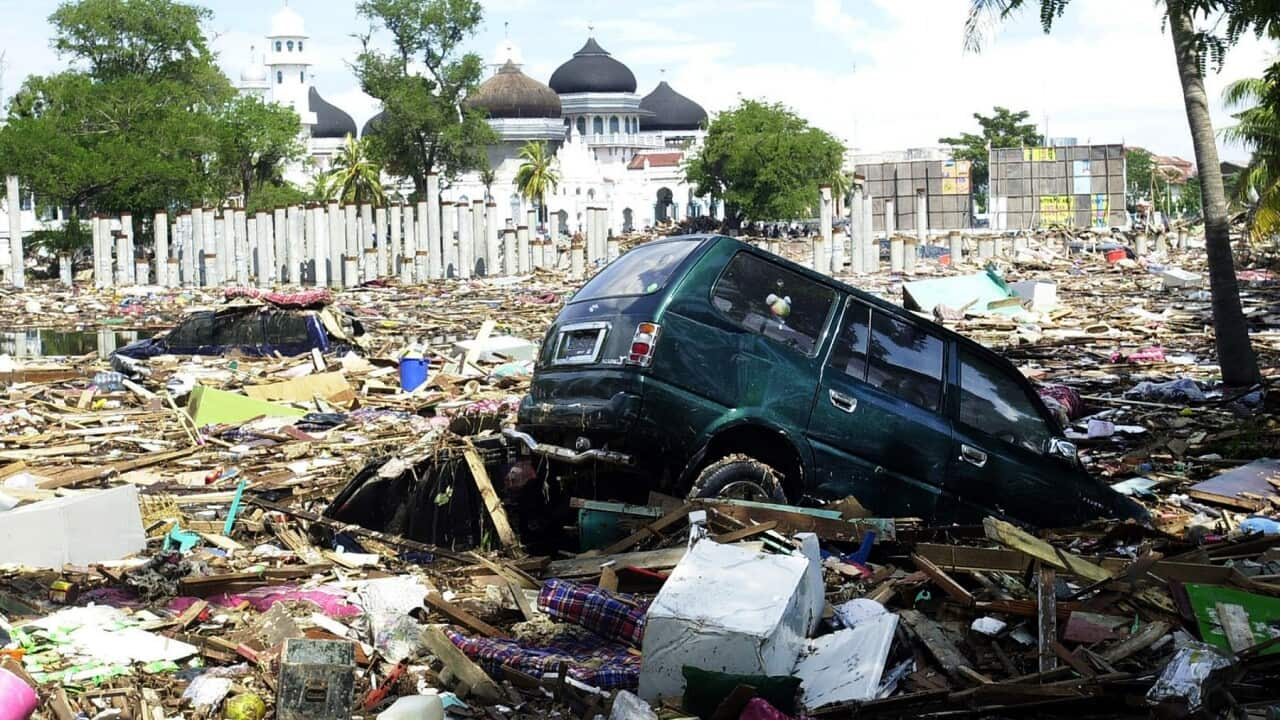TRANSCRIPT
Twenty years ago, fisherman Razali was preparing for a day at sea, when he heard what sounded like an explosion.
Soon after, he looked out over the ocean in Banda Aceh and saw a wall of water heading his way.
“When I came out of my home, I saw the big wave. I ran immediately and didn’t turn back. I told everybody to get out and go up the mountain. Because a big wave is coming here, to our village.”
The sound Razali heard was an undersea earthquake.
Moments later, the wall of water made landfall, a tsunami bringing death and destruction to Aceh province on Indonesia’s biggest island.
As one of the few that recognised the danger, Razali had run home to his pregnant wife.
The pair setting off immediately for higher ground.
His wife, Nadiah gave birth that night on the mountain top, as their entire village below was destroyed.
“When the tsunami happened, I was 9 months pregnant and going up the mountain was very difficult. When I arrived at the top of the mountain, it was 7pm. My son, Mohamed, was born just after. I had nothing, no midwife or anyone to help me."
When the water receded, the pair walked back down with their newborn son.
They carried life but were surrounded by death.
“While we were walking to the emergency shelter, I saw so many dead bodies laid out on the road. I had to step over them, there were so many. There was no other way to go. When I saw the bodies, I wondered if my own family were among them.”
The tsunami killed more than 60,000 people in Banda Aceh, or nearly one quarter of the city’s population.
And 170,000 people died in Aceh province, making Indonesia the country with the highest death toll.
But Sri Lanka, India and Thailand also suffered staggering casualties.
Thousands were killed on Thailand’s popular Phi Phi island, including foreign tourists.
“You could hear people screaming 'go, go, go' and some people crying. The wave very bad. We’ve never had anything like that on Phi Phi Island. And a lot of people died."
The economic cost of the damage was several billions of dollars.
It took years to restore water and electricity and providing shelter for the 1.7 million displaced people.
The scale of destruction was met with an outpouring of donations, the charity World Vision received more than $100 million from donors in Australia alone.
That was used in part to build 12,000 homes for survivors, as well as schools and health clinics.
Local artist Asanga Guruge's life's work was destroyed when the tsunami reached Sri Lanka's Kalutara District.
"Many people lost so much in the Tsunami, and for me that was my gallery. I lost many paintings that I loved, including some from my childhood."
With funding from World Vision, his studio was rebuilt and Asanga began providing art therapy to help children overcome trauma.
"We knew learning art and drawing could help them understand their mentality and have a positive impact."
But twenty years on, those that survived carry painful memories.
Back in Banda Aceh, services will today be held at the region’s many tsunami memorials.
Sabari survived the tsunami by clinging to a tree for 12 hours before being rescued.
“I was adrift in the current, holding onto a banana tree to stay afloat. It eventually got wedged against another tree. I survived in that position until 8pm."
He was with his wife in the moments before the tsunami struck, but she was swept away, along with his daughter.
“The next day, locals told me they found the body of a woman and a child. I saw the many bodies lying in the road, waiting to be identified. And I saw my wife and daughter.”
A day of near unprecedented loss and destruction, remembered by those that survived.













